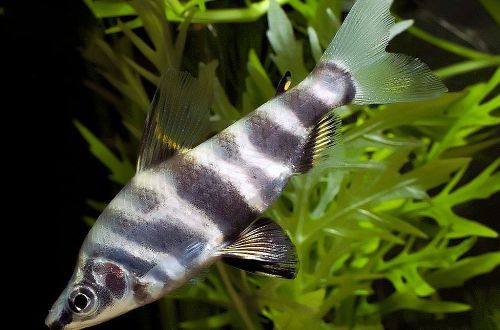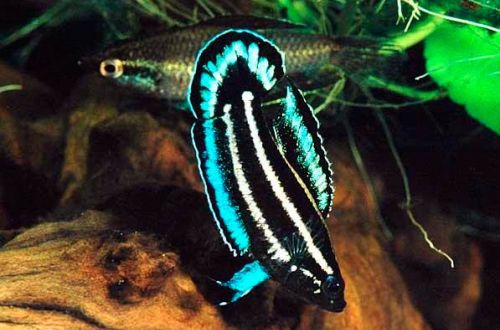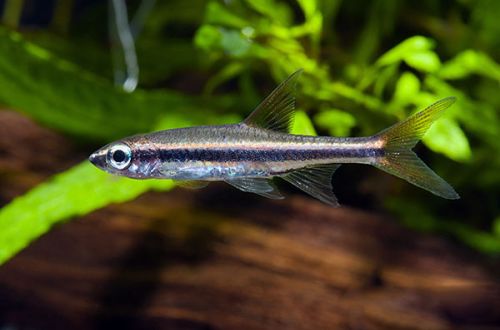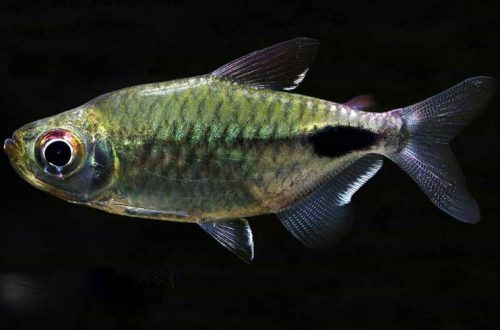
Abramites marble
Abramites marble, scientific name Abramites hypselonotus, belongs to the Anostomidae family. A rather exotic species for a home aquarium, due to its low prevalence due to breeding problems, as well as its complex nature. Currently, the vast majority of fish of this species, presented for sale, are caught in the wild.

Contents
Habitat
Originally from South America, it is found throughout the Amazon and Orinoco basins on the territory of the modern states of Bolivia, Brazil, Colombia, Ecuador, Guyana, Peru and Venezuela. Inhabits the main river channels, tributaries and creeks, mainly with muddy water, as well as in places that are annually flooded during the rainy season.
Brief information:
- The volume of the aquarium – from 150 liters.
- Temperature – 24-28°C
- Value pH — 6.0–7.0
- Water hardness – soft to medium hard (2-16dGH)
- Substrate type – sandy or small pebbles
- Lighting – moderate
- Brackish water – no
- Water movement is weak
- The size of the fish is up to 14 cm.
- Nutrition – a combination of live food with herbal supplements
- Temperament – conditionally peaceful, kept alone, can damage the long fins of other fish
Description
Adult individuals reach a length of up to 14 cm, sexual dimorphism is weakly expressed. The fish are silver in color with wide black vertical stripes. Fins are transparent. On the back there is a small hump, which is almost invisible in juveniles.
Food
Abramites marble in the wild feeds mainly at the bottom on various small insects, crustaceans and their larvae, organic detritus, seeds, pieces of leaves, algae. In a home aquarium, as a rule, you can serve live or frozen bloodworms, daphnia, brine shrimp, etc., in combination with herbal supplements in the form of finely chopped pieces of green vegetables or algae, or special dry flakes based on them.
Maintenance and care, arrangement of the aquarium
This species has a very wide distribution area, so the fish is not very whimsical to the design of the aquarium. The only thing to pay attention to is the tendency of Abramites to eat plants with soft leaves.
Water conditions also have a wide acceptable range of values, which is a definite plus in the preparation of an aquarium, but it is fraught with one danger. Namely, the conditions in which the seller keeps the fish may differ significantly from yours. Before buying, be sure to check all key parameters (pH and dGH) and bring them into line.
The minimum set of equipment is standard and includes a filtration and aeration system, lighting and heating. The tank must be equipped with a lid to avoid accidental jumping out. Aquarium maintenance comes down to a weekly replacement of part of the water (15-20% of the volume) with fresh and regular cleaning of the soil from organic waste, food debris.
Behavior and Compatibility
Abramites marble belongs to a conditionally peaceful species and is often intolerant of smaller neighbors and representatives of its own species, prone to damage to the long fins of other fish. It is advisable to keep alone in a large aquarium in the company of strong fish of a similar or slightly larger size.
Fish diseases
A balanced diet and suitable living conditions are the best guarantee against the occurrence of diseases in freshwater fish, so if the first symptoms of an illness appear (discoloration, behavior), the first thing to do is check the condition and quality of the water, if necessary, return all values to normal, and only then do treatment. Read more about symptoms and treatments in the Aquarium Fish Diseases section.





